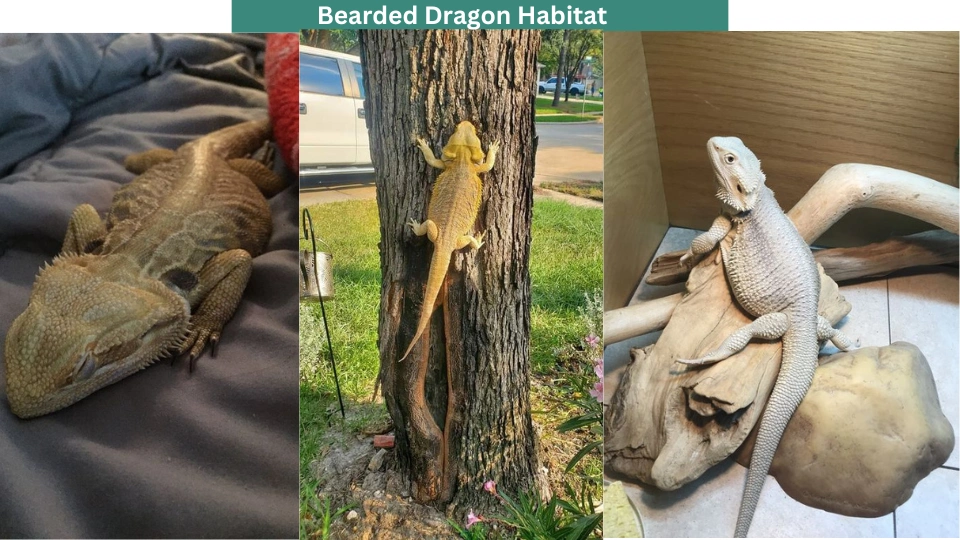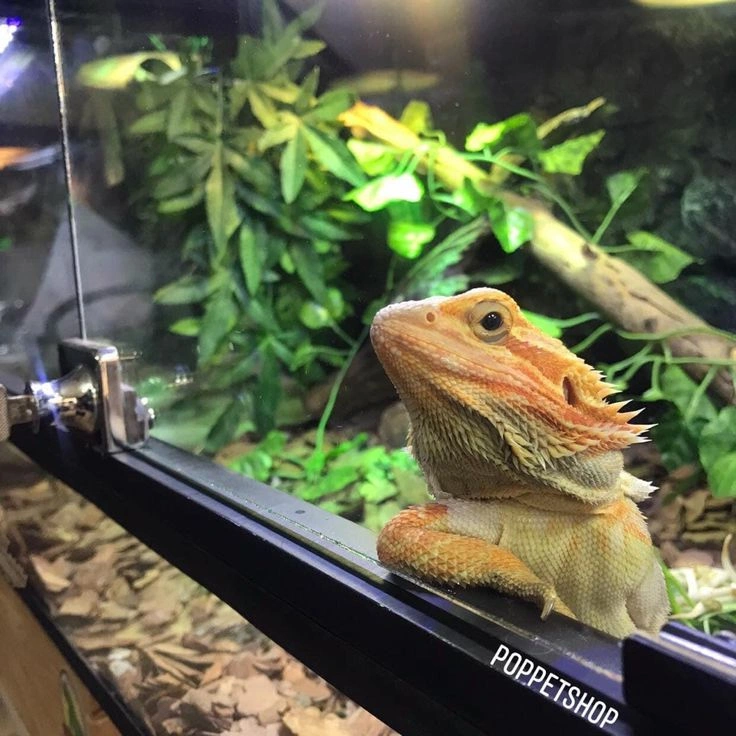Last Updated on March 2, 2024 by Aftab Tariq
Bearded dragon habitat is crucial for keeping your pet healthy and happy. Curious about how to create a cozy home for your bearded dragon? Find out how to make the perfect Bearded Dragon Habitat!
You might think that these lizards like to live in desert homes and enjoy walks outside. Some people even keep more than one beardie together. But there are some important things to consider:
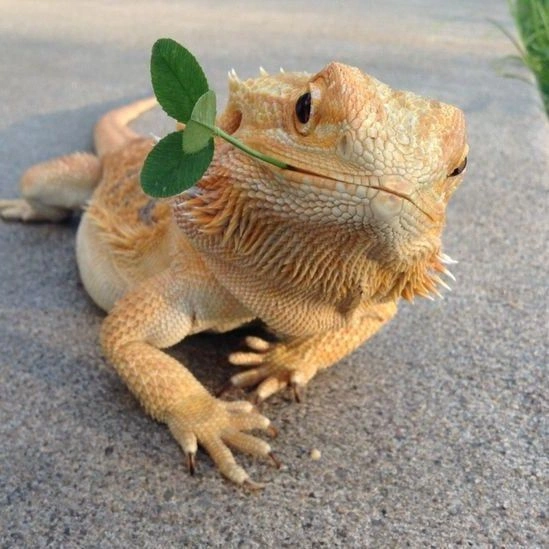
Desert homes are good, but sand can be risky for your pet.
Taking your dragon on too many walks in new places can make them feel nervous.
If you have more than one bearded dragon, they need lots of space to live together safely.
Overview of Bearded Dragon Housing
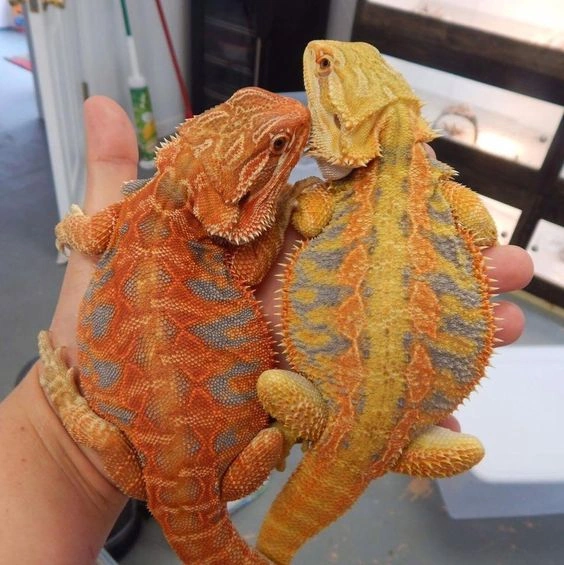
| Aspect | Description |
|---|---|
| Tank Size | Hatchlings and juveniles: 20-50 gallons (75-190L) Young adults: about 50 gallons (190L) Adults: 75-120 gallons (280-455L) – Remember, bigger is better! |
| Temperature Range | High: 110°F (43°C) Low: 70°F (20°C) |
| Humidity | Maximum: 60% Ideal: Below 30-40% |
| Lighting | UVA/UVB 10.0 Basking light |
| Substrate | Options include paper towels, newspaper, and tiles |
| Supplies & Decorations | Provide a basking structure (wood/rock), hiding place (like a cave), and perhaps a branch or hammock. |
Natural Living Environment of Bearded Dragons
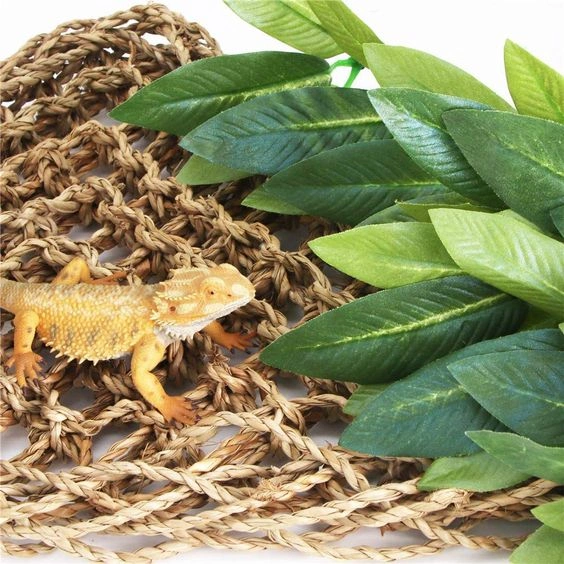
In the wild, bearded dragons live in dry places in Australia. There, plants are rare, and the ground is mostly hard soil and rocks, with some loose dirt and sand.
Not many different plants grow there, but there are some small bushes and trees that they can hide in or climb on.
Water is hard to find, but when it rains, bearded dragons make sure to use it. That’s why they enjoy soaking when they get the chance.
What Kind of Home is Best for Your Bearded Dragon?
In the wild, bearded dragons live in desert places. So, the best home for them in captivity is a terrarium that looks like a desert. But, not everything in a desert home is good for young bearded dragons. Still, there are some important things to remember:

- Bearded dragons need warmth. They like it hot.
- Keep the air in their tank dry. High humidity, which means a lot of moisture in the air, can make them sick.
- Bearded dragons need bright light above their tank to stay warm and awake. They also need special UV lights to stay healthy and grow strong bones.
Bearded Dragon Tank Size
The size of the tank you need for your bearded dragon depends on how old and big it is. When they’re young, they can live in a smaller tank, but as they grow, they’ll need more space. You might notice your young bearded dragon acting restless or trying to climb the glass walls, which means it’s time for a bigger tank.
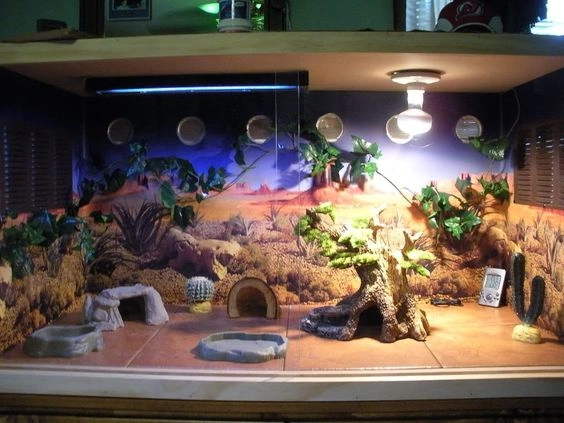
For adult bearded dragons, a big desert-style tank is best. Even though they’re not huge, they’re still quite active and need plenty of room to move around.
When they’re young, a smaller tank works well. A 20-gallon tank is good for tiny babies. Here’s what you’ll need for their home:
- A glass tank (20-50 gallons / 75-190 liters)
- Simple flooring like tiles or paper towels
- Heat bulb and UV bulb
- Mesh lid for the tank
- A hiding spot like a cave
- A rock for basking
- A shallow water bowl (baby dragons can drown easily!)
- A branch for climbing
Keep their young home simple. This makes it easier to find and feed them. You can make their tank fancier when they’re older.
Choosing the Right Tank for Your Bearded Dragon
Did you know that tanks for bearded dragons can be made of different materials? Let’s explore the types of tanks you can use for your pet.
Glass Tanks: Glass tanks are popular because they’re clear and easy to clean. They don’t scratch easily like plastic tanks. But for adult bearded dragons, you’ll need a big one, around 120 gallons. However, bigger glass tanks can be fragile and expensive. You can save money by buying used ones, but check for cracks.
“In the realm of bearded dragon habitats, glass tanks and plastic enclosures stand as guardians of comfort and security, offering a sanctuary where the wild meets the warmth of captivity, creating a haven for these majestic creatures to thrive.”
Wooden Tanks: Wooden tanks are a cheaper alternative to glass or plastic. You can use shelves or cabinets as tanks or build one from scratch. However, wood can absorb water and get moldy. To prevent this, you’ll need to coat it with a waterproof sealant. Quality sealants can be hard to find at a low cost.
Plastic Tanks: Plastic tanks have improved a lot over the years. They’re made of strong materials like PVC or ABS plastic. While they may not be as clear as glass, they’re less likely to break and can have holes for cables. Professional plastic tanks can be pricey, but you can try DIY options or repurpose wooden furniture.
A practical option often used is repurposing a wooden shelf or cabinet as a terrarium, or building a wooden tank from scratch, a common practice among breeders to save on housing costs for their animals.
Wooden tanks structurally resemble plastic ones, typically made of plywood with wooden sides and a front featuring a two-piece sliding glass door system.
However, one downside of wooden tanks is their porous nature, which can lead to water absorption, rot, and mold growth.
Even though desert terrariums are usually dry, providing water sprays and a bowl for your dragon introduces moisture. This moisture, along with impurities, can seep into the wood, causing unpleasant odors and sanitation issues.
To address this, applying a non-toxic, waterproof coating like pond shield to the entire wooden surface is recommended.
This coating makes the surface smooth, waterproof, and visually appealing. Keep in mind that finding quality products at an affordable price might be challenging.
Lighting for Bearded Dragons
Light is super important in a bearded dragon’s home. It helps you see your pet and makes sure they stay healthy.
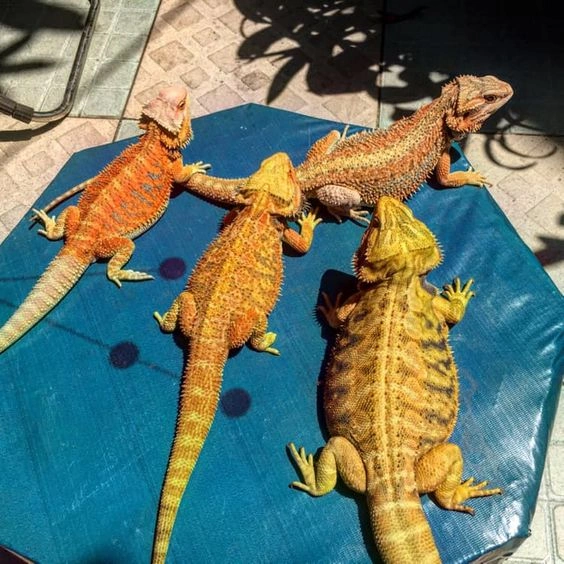
Bearded dragons are used to bright sunlight in Australia, so they need lots of light in their tank to feel comfortable.
Another important thing is UVA and UVB light. These help your pet make vitamin D and keep their body working right, like making strong bones.
For young dragons, a good setup is using a regular light bulb and a special UV light. You can put them both on the lid of the tank. This setup is good because it’s not too expensive and you can use it again when your dragon gets bigger.
Mercury Vapor Bulbs
Using mercury vapor bulbs for adult bearded dragons in their tank is a common practice among reptile enthusiasts. These bulbs emit both light and heat, replicating the natural conditions of sunlight.
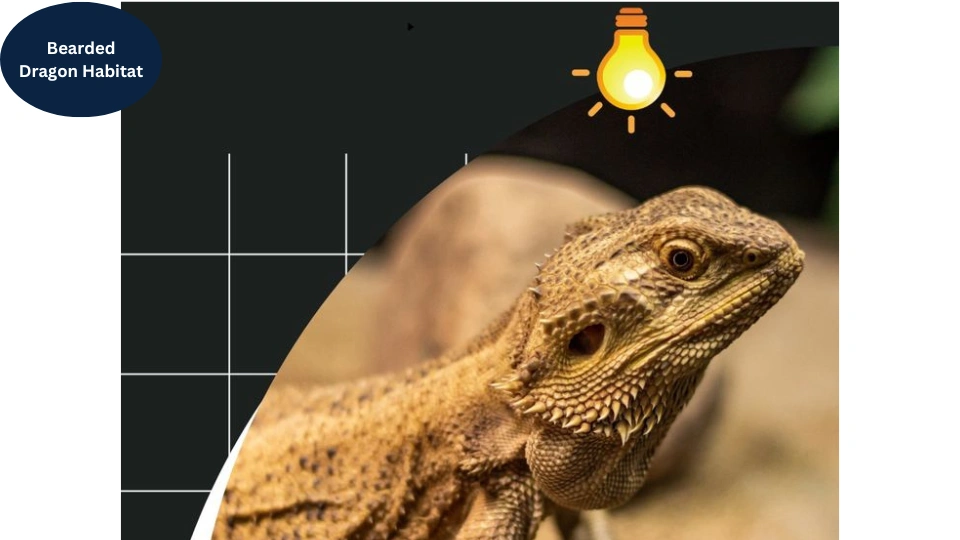
Due to their heat output, they require special ceramic fixtures for safety. While mercury vapor bulbs may be more expensive upfront compared to using separate light and heat sources, many keepers find them convenient and aesthetically pleasing.
With these bulbs, there’s no need for multiple fixtures, simplifying the setup process. Additionally, they provide a spectrum of light that closely resembles natural sunlight, which can benefit the overall well-being of the bearded dragon.
Therefore, despite the initial cost, the ease of setup and the appealing aesthetics make mercury vapor bulbs a popular choice for adult bearded dragon enclosure requirements, enhancing the overall bearded dragon habitat setup.
UVB Lights
In most pet tanks, you’ll find a type of UVB light called linear fluorescent bulbs. For bearded dragons, the best one to use is grade 10.0. This light should give off 5-7% of UVA/B rays and cover about 80% of their home.
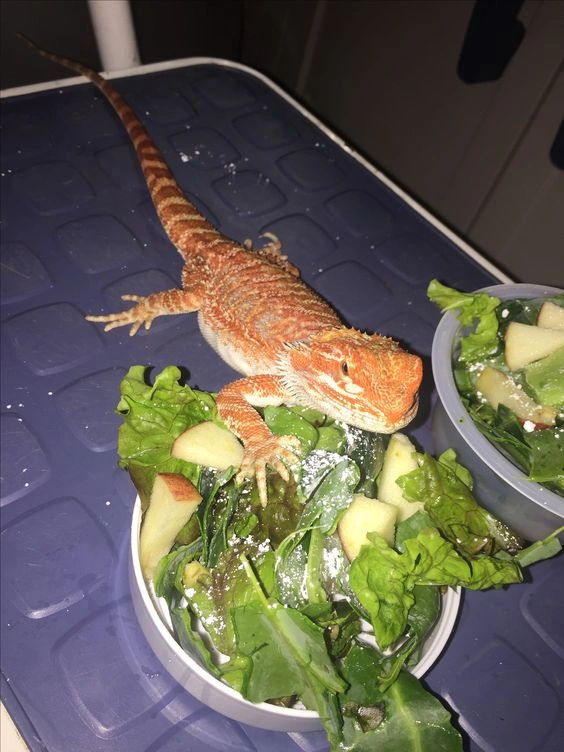
Young bearded dragons grow quickly, so they need lots of UVB to keep their bones strong and avoid getting sick. It’s important to have a light that gives off both UVA and UVB, but UVB is the most important for them.
These UV lights don’t stay strong forever. You’ll need to change them every six months or so. If you want to be really sure it’s working right, you can get a special tool called a UV meter to check the light’s strength.
Bearded Dragon Habitat Temperature
Bearded dragons come from hot desert areas, so they need a warm habitat to be happy. This habitat should have different temperatures in different parts.
One side should be really warm, like a sunny desert spot, while the other side should be cooler. You can make this by using special lights and having a long tank instead of a square one.
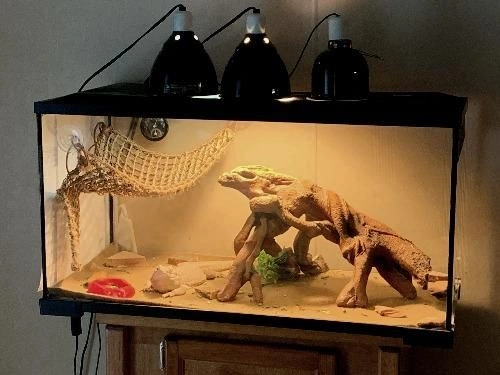
The warm spot in the habitat should be around 110°F (43°C), while the rest of the habitat should be at least 70°F (20°C), even at night. Some say it’s okay if it goes down to 65°F (18°C), but it’s better to keep it warmer to be safe.
Usually, homes stay warm enough, but if your room gets colder than 70°F, you might need something extra to keep your dragon warm. An undertank heater is a good choice because it mimics how rocks in the desert keep warm during the night.
So, to make your bearded dragon happy, give them a habitat with warm and cool spots, and keep the temperature just right, even when it’s nighttime.
Choosing the Right Bedding for Your Bearded Dragon
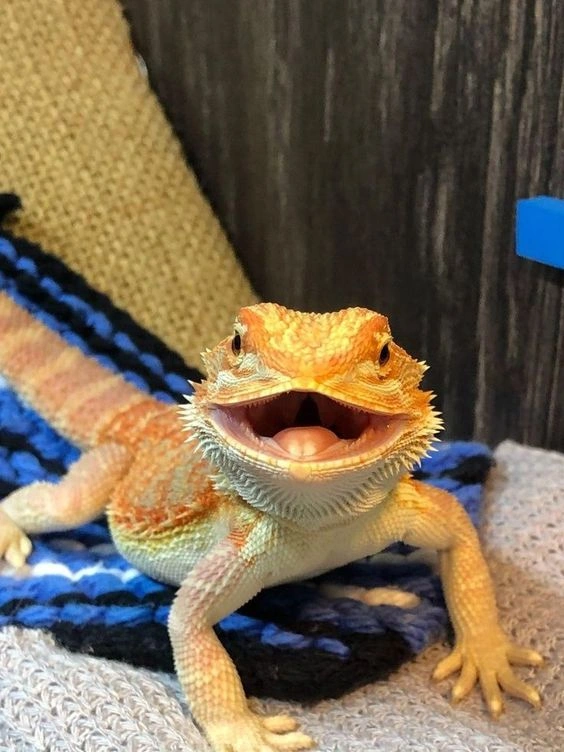
When it comes to what to put on the floor of your bearded dragon’s habitat, there are different opinions for adults. But everyone agrees: if your bearded dragon is still a baby, it’s not safe to use loose substrate.
Why is that?
Well, baby bearded dragons are very energetic eaters. They attack their food so quickly and fiercely that they might accidentally eat some of the loose stuff on the floor.
This can cause serious problems in their belly and make them very sick. Another problem is that bearded dragons poop a lot. With loose substrate, it’s hard to keep their tank clean and healthy.
Suitable Bearded Dragon Substrate
Selecting the perfect substrate is key for successful growth.
Newspaper
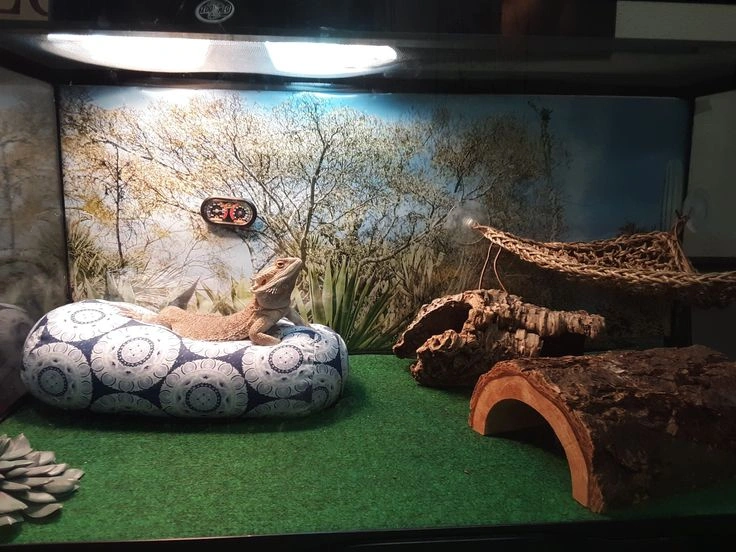
If you’re looking for a simple and affordable ground cover for your bearded dragon’s tank, newspaper is a great choice. It’s cheap and easy to find. Newspapers can soak up liquids well, which helps keep your pet’s tank clean.
They’re also strong, so your pet won’t slip on them when they move around. Before using newspapers in your pet’s tank, it’s important to let them sit in the room for a few weeks. This helps make sure that the ink from the printing has dried and won’t come off.
Ceramic Tiles
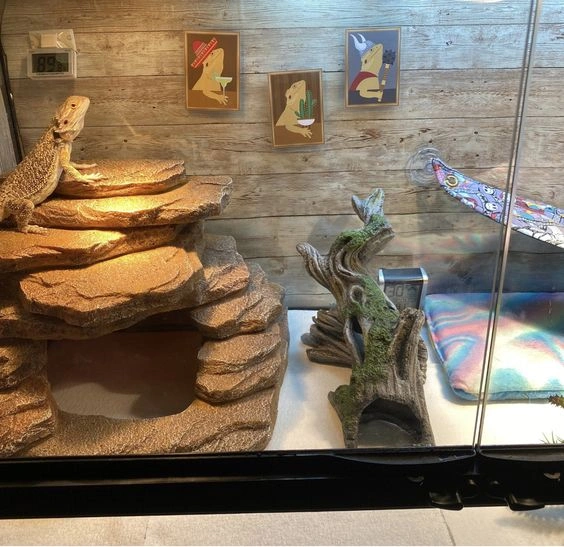
When considering ceramic tiles for your bearded dragon habitat, you might first think of the smooth tiles used in bathrooms. But there are many different styles, like ones that look like stone or sand. Ceramic tiles are cheap and easy to cut. Bearded dragons also like that the tiles get warm.
But, you have to be careful about one thing. If your lamp makes a lot of heat, don’t put ceramic tiles or stone slates right under it.
Slate
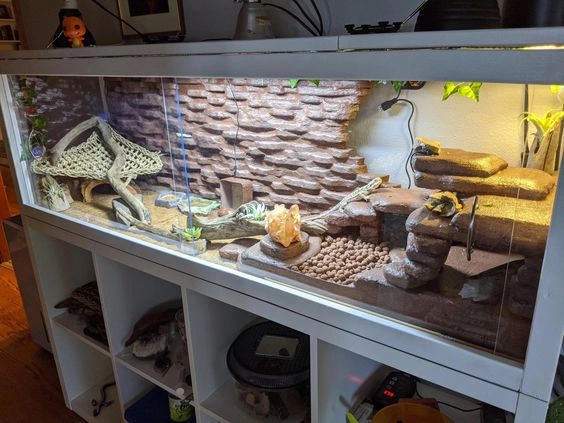
Slate is a very pretty and natural-looking material for your bearded dragon’s habitat. It’s got some great features too. Slate gives your lizard good traction to move around, and it helps wear down their nails. Plus, it gets warm and stays warm, which bearded dragons enjoy.
But, there are a couple of downsides to slate. It’s harder to cut than other materials like vinyl or ceramic tiles. Also, slate can absorb waste more easily, which means you’ll need to clean it more often and use bleach to keep it from smelling or getting dirty.
Paper Towels

Another good option for the ground in your bearded dragon’s home is paper towels. They’re easy to use and make the tank look tidy. You can easily change them when they get dirty. Paper towels are really good at soaking up liquids. They’re often used in tanks for young bearded dragons.
Reptile Carpets
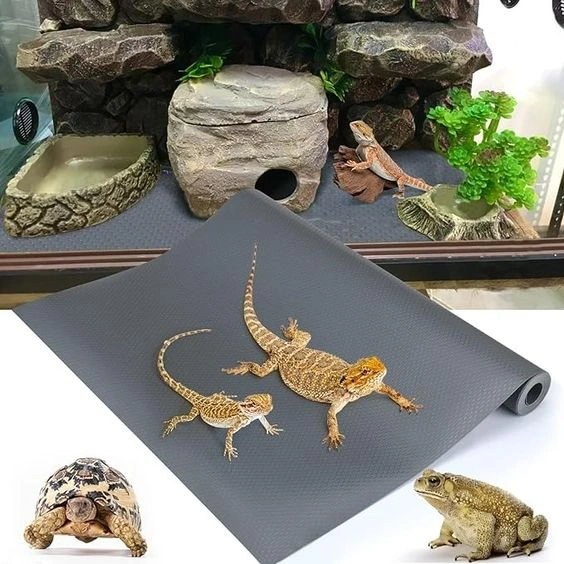
Reptile carpets are commonly used in bearded dragon habitats, but they don’t stay clean for long. Because bearded dragons poop a lot and everywhere, the carpets get dirty quickly.
If you do decide to use a reptile carpet, make sure it’s safe for bearded dragons. Some carpets have loops of fiber that can catch their claws and hurt them. So, it’s important to choose a carpet without those loops.
Vinyl Tiles
Vinyl tiles are a popular choice for bearded dragon habitats. They’re affordable, come in many colors, and are easy to cut. They’re also smooth and easy to clean because they don’t absorb liquids or waste.
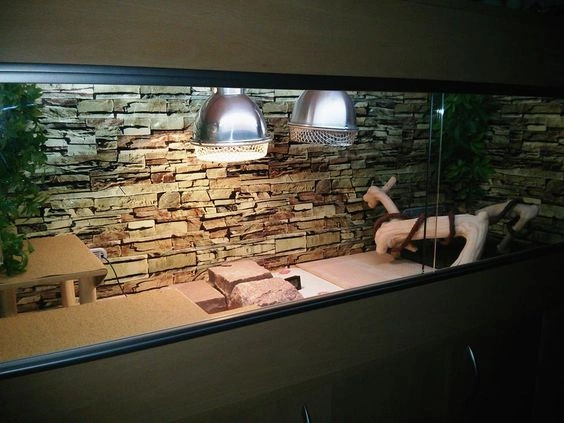
However, vinyl has some drawbacks. It’s not as rough as materials like stone, so your lizard might slip more easily. Also, there are concerns about the health effects of plastic, like PVC, which vinyl is made of.
No research has been done specifically in terrariums to confirm or deny this. But based on what we know about human homes, it’s better to be careful and avoid any possible risks.
Not Suitable Substrate
Identifying Substrates Unsuitable for Bearded dragons.
Coconut Coir
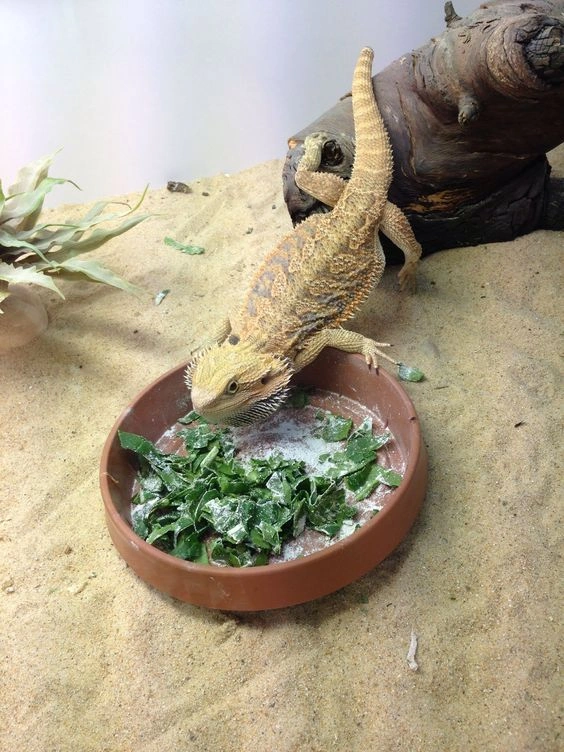
Coconut coir is not a good choice for your bearded dragon’s home. Even though it’s good at fighting germs, it’s not safe for them.
It’s a loose material that can cause problems if your dragon accidentally eats it. Also, coconut coir keeps moisture, which is not good for a desert-like environment. Too much moisture can make your dragon sick with breathing problems.
Wood Shavings
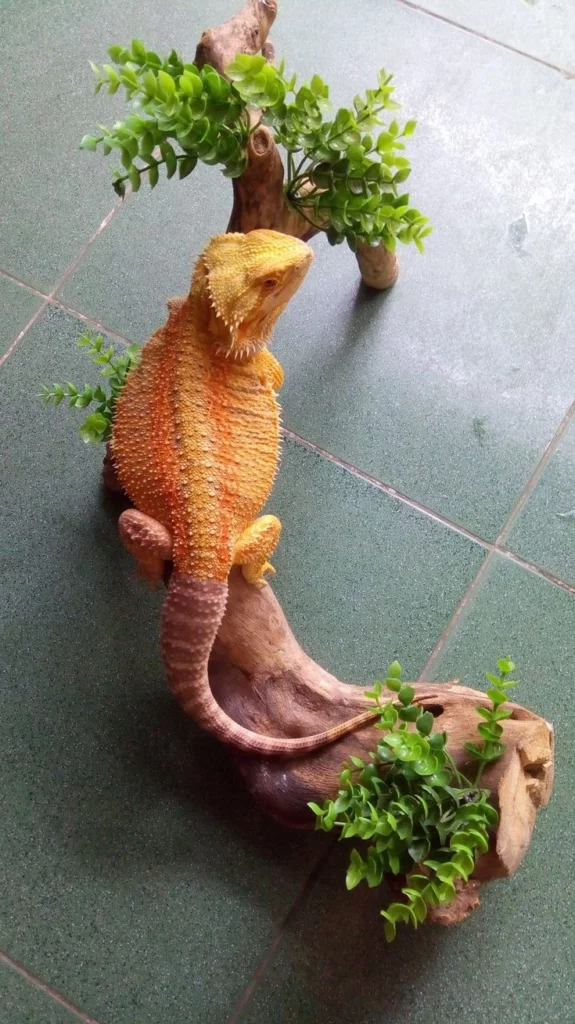
It’s important to avoid using wood shavings in your bearded dragon’s home. They’re not natural for them and can cause problems. Wood shavings might have chemicals in them that can harm your pet.
Also, if your dragon accidentally swallows them, it can lead to a blockage in their belly. So, it’s best to say no to wood shavings in your bearded dragon’s tank.
Sand
Sand is a popular choice for creating a desert-like environment in a bearded dragon’s home, but it’s also a topic of debate. While it looks nice and natural, there are some serious concerns.
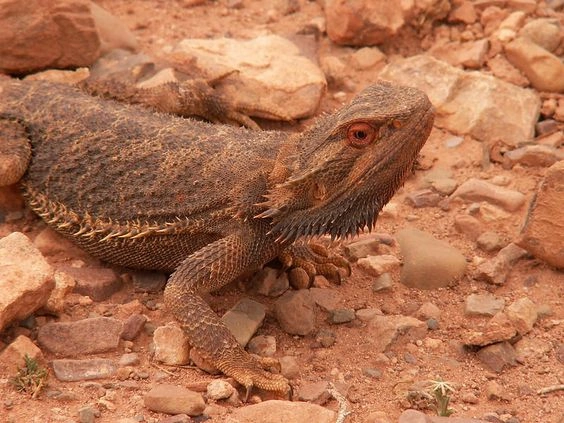
One big problem is that if your lizard accidentally eats the sand, it can get stuck in their belly and make them sick. Also, keeping sand clean is tough and it can become a breeding ground for harmful germs.
If you still want to use sand despite the risks, you’ll need to clean it daily and change it completely every month. When you feed your bearded dragon, it’s best to put their food on a smooth surface like a plate to reduce the chance of them swallowing sand.
It’s important to know that sand isn’t safe for young dragons. They’re more likely to eat it while they’re feeding, which can be deadly. Older dragons are usually more careful when they eat, so they’re at lower risk of swallowing sand.
Bioactive substrate
In the world of caring for bearded dragons, some people are okay with using loose substrates, despite the risks involved. Some folks are really passionate about making their pet’s home look just like their natural habitat. They believe it’s important to let their pets dig and burrow, just like they would in the wild.
If you’re one of these people, you might consider using a special kind of substrate called a desert-type bioactive substrate in your bearded dragon habitat.
A bioactive substrate can hold onto moisture and air, which creates a home for helpful bacteria and tiny bugs. These little creatures break down waste in the habitat, which is why it’s called “bioactive.”
This kind of substrate can also support plant growth. If it’s thick enough, your pet can even make burrows in it.
But, there are still some risks. Sometimes, the substrate can get compacted, which isn’t good for your pet. It’s important to think about your dragon’s personality, health, and eating habits before using this kind of substrate.
Also, because this substrate needs to stay moist to work well, you’ll need to keep an eye on the humidity in the habitat.
Supplies and Gear for Bearded Dragons
In every bearded dragon habitat, the things that make it look nice also serve important purposes. They help your pets do things like sunbathe, relax, and hide, just like they would in the wild.
Here are a few things you need for your bearded dragon’s tank:
- A rock or log where they can bask under the heat lamp.
- Branches or hammocks they can climb on.
- A cozy hiding spot, like a snug cave or a simple paving stone setup.
Basking Structures
In a bearded dragon habitat, it’s important to give them a place to bask, which means soaking up the warmth from a light source. This could be a flat rock or a log placed directly under the heat lamp.
But, you need to be careful because the basking spot shouldn’t get too hot, especially if it’s made of stone that can hold onto a lot of heat. You can avoid this by choosing the right strength of light and making sure the distance from the basking spot is just right.
Climbing Spots – Branches and Hammocks
Bearded dragons really enjoy climbing. They do it a lot in the wild too. When they’re up high, they can catch some sun, keep an eye out for danger, and look for bearded dragon diet all at once! That’s why your pet bearded dragon will likely want to climb around in its habitat at home.
Strong, clean branches are a great option for them to climb on. There are also special hammocks you can buy or make at home. Once they get used to it, many bearded dragons really like hanging out in these comfy hammocks.
Hiding places for Bearded Dragons
Some people worry about using caves and hiding spots for bearded dragons in their habitat. They’re concerned because bearded dragons need a lot of UV light to stay healthy.
But, hiding is a natural behavior for animals, especially ones that have predators. A lizard without a hiding spot might feel stressed out all the time.
It’s important to remember that healthy bearded dragons like to bask in the light. If your dragon spends too much time hiding, you should try to figure out why. Is it eating well? Is it showing signs of sickness? Maybe it’s stressed because you’ve changed its home or been handling it too much.
If you’ve figured out why your dragon hides a lot but think it’s stopping them from getting better, you can make a smaller hiding spot out of tiles. This way, part of their body can still get UV light, which is good for them.
Is Walking My Bearded Dragon a Good Idea?
Despite what you might see online or on YouTube, bearded dragons don’t usually want to go for walks in the park or on adventures to new places.
We’ll cover this topic in more detail later. But for now, what’s important to know is that all bearded dragons really need is a safe place outside where they can get sunlight. They like to explore, soak up the sun, and maybe eat some dandelions.
It’s best if this place is your own backyard or a friend’s backyard, where you can make sure everything is safe for them.
Guidelines for Walking Your Bearded Dragon
Here’s some advice on how to start taking your bearded dragon out:
- First, only take out a bearded dragon that’s mature enough and used to being handled. Start slowly, taking them out for just a few minutes at a time.
- Make sure the weather outside is good for them – not too hot or too cold. Don’t take them out if it’s too humid or if it’s colder than the lowest temperature in their tank. Wait for sunny weather.
- Don’t take them out every single day. After a while, you’ll start to see how your dragon’s temperament behaves. Some might be shyer than others. Watch for signs of stress, like not eating or hiding a lot, after each outing.
- To help them feel safe, give them something to hide under, like a bench or a covered area.
- It’s a good idea to use a harness. You can buy one or make your own. If your dragon seems upset or stressed, stop the walk and take them back home.
- And never let your bearded dragon play with other pets, even if you think they’re friendly.
Should I Have a Feeding Tank for My Bearded Dragon?
Because bearded dragons can make a mess and to avoid problems with sand causing blockages, people used to suggest feeding them in a special tank just for eating. But now, it’s best to avoid this idea because it can stress out your bearded dragon.
Young bearded dragons are especially likely to get stressed out. When you first put them in their new home, they need time to get used to it. Sometimes, they won’t eat or come out of their hiding spot for days.
When you move your pet to a different tank for eating, it’s like they have to get used to a new place all over again. Young bearded dragons are usually more nervous because they’re an easy target for predators.
Even though adult bearded dragons aren’t as nervous as young ones, they still like to eat in their own space where they feel safe.
So, it’s better to make sure your main tank is a safe place to eat, with no sand or small spaces where insects can hide.
Is It Okay for Bearded Dragons to Live Together or With Other Types of Animals?
Bearded dragons usually live alone. But sometimes people keep more than one together, or even with other types of pets, like other lizards. They might do this because it’s easier or because they like having more pets.
If you want to do this, there are some important rules to follow:
First, the tank needs to be big enough, with plenty of places for all the pets to bask and hide.
It’s best to have no more than two bearded dragons in a tank, or three if it’s really big – about twice the size of the best option for just one bearded dragon (which is more than 200 gallons / 700 liters).
It’s a good idea to have another tank to separate the pets if something goes wrong.
Bearded dragons might eat smaller lizards if they get the chance. So, if you have more than one, they should be the same size.
Don’t put two male bearded dragons together because they’ll fight over territory. Two females are usually okay.
Some people try to keep different types of lizards together. If you want to do this, they should be the same size and come from similar places.
Some types that are recommended and might be okay to live with bearded dragons include desert tortoises, shingleback lizards, blue tongue skinks, and nocturnal desert geckos.
Creating the Ideal Bearded Dragon Habitat
Creating the perfect home for your bearded dragon isn’t a one-size-fits-all task. There are lots of choices to make when it comes to the tank, bedding, decorations, and lighting.
You can mix and match these options to suit your preferences and your dragon’s needs. Just make sure you prioritize their basic requirements and safety. A habitat that’s warm, dry, well-lit with both visible and UVA/UVB rays, and comfortable will help your dragon thrive.
What setup do you think would be best for your bearded dragon? Have you tried different tanks and substrates? Does your dragon enjoy being taken out? We’d love to hear about your experiences, so feel free to share them in the comments below!
Glossary
ABS – a tough, shiny plastic.
Diurnal – active during the day.
PVC – widely used plastic.
UVA – helps with health and activity.
UVB – important for vitamin D3.
Explore various bearded dragon habitat ideas to create the perfect environment for your pet’s well-being and enrichment. You can find all the essential bearded dragon habitat accessories at Chewy and Petco for a convenient one-stop shopping experience.
Note: Explore various options for purchasing a bearded dragon for sale.If anyone wants to learn more about baby bearded dragons, they can read our article at Harpersatelier.
Sources
I am a dedicated content writer with more than five years of experience, particularly skilled in the art of storytelling. My writing journey commenced during my college years, where I pursued journalism and unearthed my talent for creating captivating narratives.

